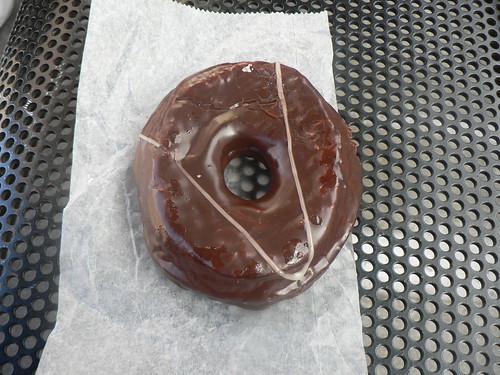I don't know about you, but having a great conversation is the next best thing to eating a chocolate doughnut. I love to talk, and I love to listen, and I love words (no surprise there).
 |
| Photo by: stu_spivack, courtesy of Flickr |
Yes, real life dialogue can run the same gamut, but usually it's real enough in getting us to continue with our conversation. If the conversation turns sour we usually stop speaking, leave the room, or speak with someone else in the group.
Unfortunately, in a novel, we really can't stop speaking. (There's something about pure setting that really bores the reader). We can't leave the room (because again we're looking around at the pretty rose bushes in the charming garden of our main character for all time) and we can speak to someone else in the group I suppose, though the main character will still need to speak at some point in our novel.
What we can do is to create real dialogue in the first place instead of something else. And that takes practice.
Here are some helps:
- Consider a real conversation and base your book dialogue off of that. What do people really say? "I can't believe it! Are you serious?" or do they say, "I am full of disbelief. You are talking to me like you're not very serious"?
- Consider the actions that accompany the dialogue. "I can't believe it! Are you serious?" Charly tugged at her shirt, trying to cover up the offending navel. Or, "I am full of disbelief. You are talking to me like you're not very serious." Charly thought her friend didn't understand about the latest styles. She liked the style.
- Consider how often you use dialogue. I have said this before but it bears repeating. A great book has a mixture of dialogue and setting; one doesn't overrun the other, though dialogue usually plays a slightly higher hand than setting. Look over a page of your writing. Do you have more dialogue or more setting? Dialogue will keep your writing clipping along; setting gives it more of a pause. Let me put it this way: Have you ever skipped long winded setting to get to the next piece of dialogue?

No comments:
Post a Comment
Thank you for your comment.